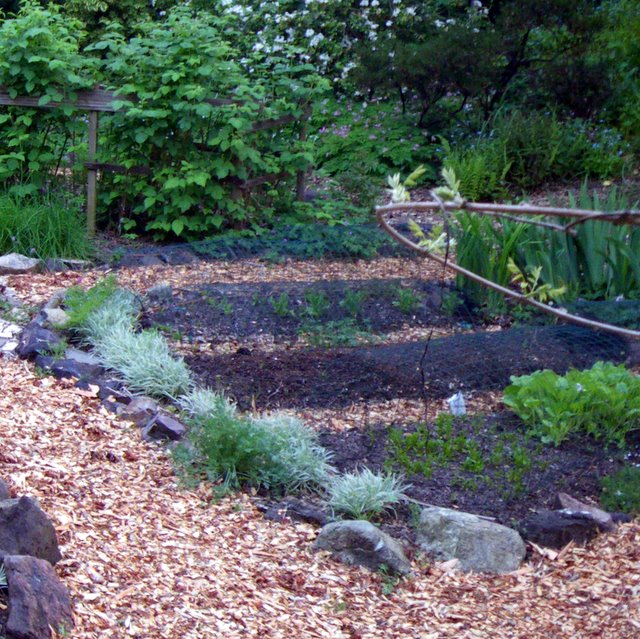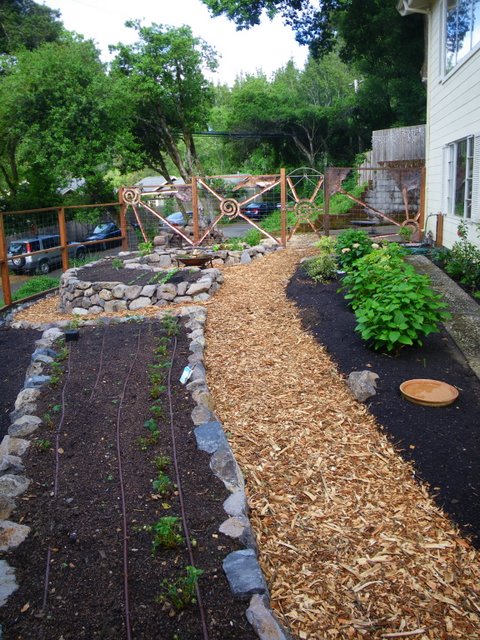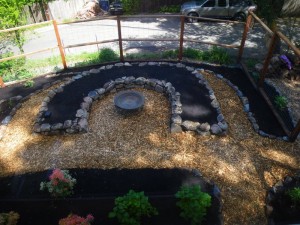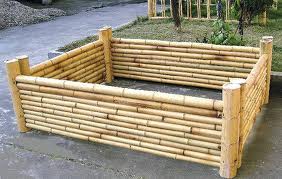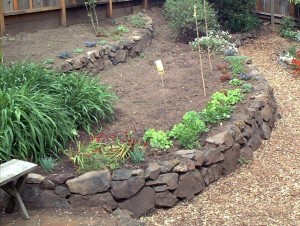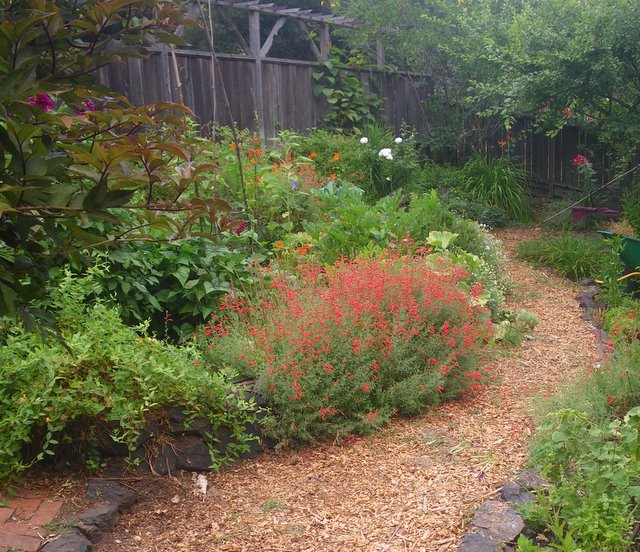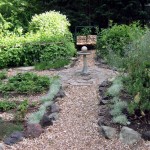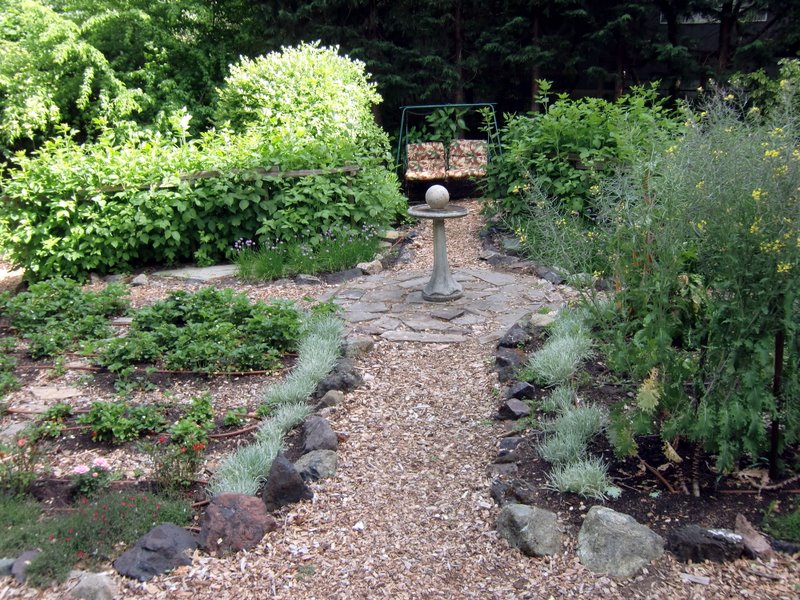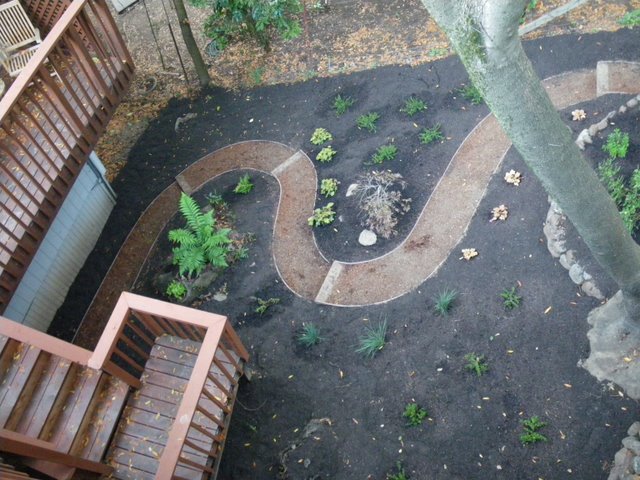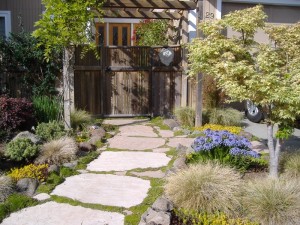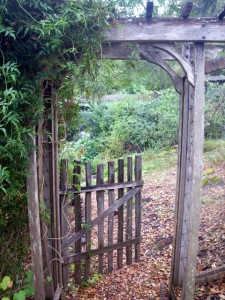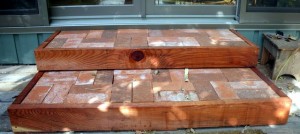by Avis Licht
When designing your garden, in addition to the obvious considerations of sun, soil and site, you want to make it beautiful with harmonious color and form and movement . To this I want to add Expectation and Surprise.
I was happily reminded of this when a friend took me on a new hike. She said it was special.
We went to an ordinary looking trailhead and walked up the dirt road through the trees and across the hills. At a certain point we came to a place in the road that had recently been worked on, with very large stones laid at the edge of the road. Two small seasonal creeks came together and went under the road through a culvert as is common here. Before going across the road my friend turned hard right down a trail.
“Where are you going?” “Just follow me,” she said. So I did. After just a short walk down into the woods, we turned around, looking back to the road – excuse the phrase – Lo and Behold! we saw the most amazing stone egg sculpture set under the road and surrounded by a 360 degree circle of stones. The sculpture was more than 6 feet tall.
The surprise was enormous and added to the joy of the vision in front of us. It was so out of the ordinary and so unexpected that we couldn’t stop exclaiming.
Although we cannot all present a surprise of an Andy Goldsworthy sculpture on our property, we can surprise our visitors with unexpected beauty and form. A fragrance, a place to sit, a view that is slightly hidden and then unfolds is a sweet gift.

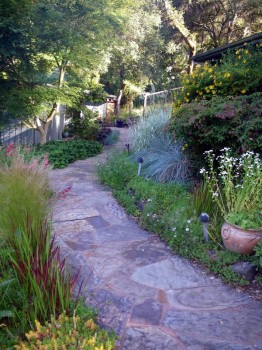
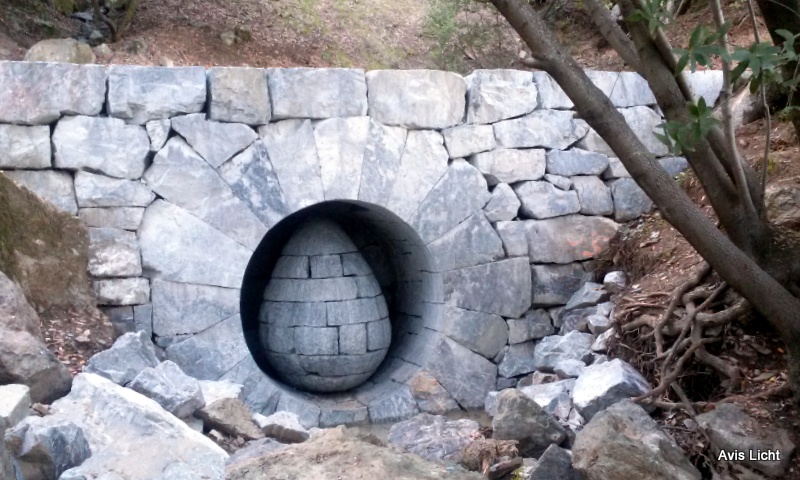
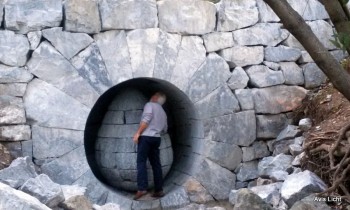
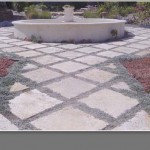
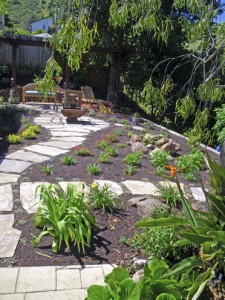

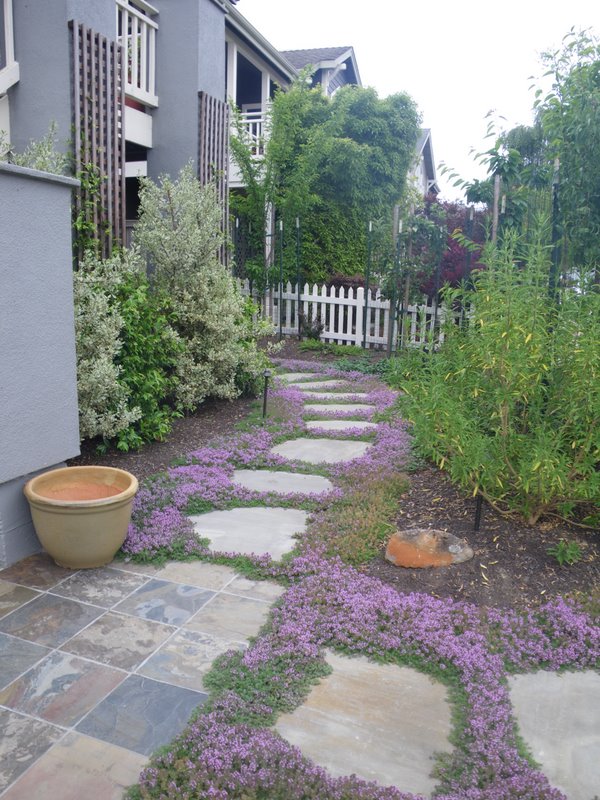 Even a simple stone path, planted with ground cover is beautiful and effective. Paths: you don’t want to live without them.
Even a simple stone path, planted with ground cover is beautiful and effective. Paths: you don’t want to live without them.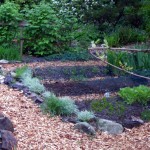
 Follow
Follow

